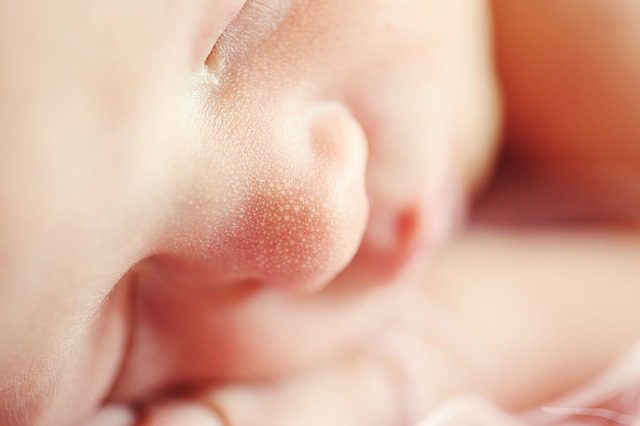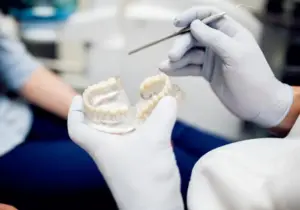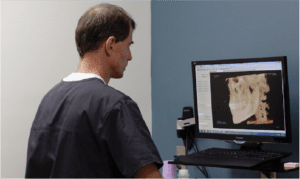A cleft lip or palate occurs once in every 600 live births. Some children are born with both. These orofacial clefts can range from mild, affecting little more than appearance, to debilitating, eliminating the child’s ability to perform vital functions like breathing and swallowing.
If your child has a cleft lip and/or palate, surgery can make a significant improvement in their appearance, quality of life, and capacity to eat, breathe and talk. Surgical interventions for orofacial clefts are typically performed as early in a child’s life as is safe; because their tissues are all still developing, it helps get them back on the right foot in life.
With the jaw and facial structures restored through surgery, your child can have a normal life. In treating a child with a cleft lip or palate, oral surgeons consider function, appearance, nutrition, speech, hearing, and emotional and psychological development. The correctional program can have many stages, and must be carefully orchestrated. Treating orofacial clefts requires a skilled maxillofacial surgeon who approaches care on a comprehensive level. Correction can take several procedures, speech evaluations, and later orthodontia.
Facial Surgeries for a Cleft Lip
A cleft lip can range from a little notch to a split that goes up to the bottom of the nose. Cleft lips only affect the soft tissues of the child’s face, making the facial surgery less invasive and allowing us to correct it very early on in life. Usually, this condition is repaired at 6 to 12 weeks old, but may be put off until as much as 6 months if a cleft palate is also involved.
One or two surgeries are usually required, depending on the extent of the cleft. Your child will be asleep under general anesthesia during the surgery and feel no pain. Our oral surgeon, Dr. Puckett, will remove excess tissue and stitch the lip together. The tiny stitches will leave only a minimal scar. Most of them will absorb as the scar heals, and not need removal. The scar is strategically placed to blend with the natural contours of the philtrum (those two lines between the middle of your upper lip and the bottom of your nose).
Maxillofacial Interventions for a Cleft Palate
A cleft palate can be on one or both sides of the roof of the mouth, and may go the full length of the palate. This is due to the bone tissue failing to meet and grow together at the roof of the mouth. Repair often takes a number of surgeries over the course of years, as bone is the most slow-growing and hardest tissue in the body.
The initial operation is usually done when the child is between nine months and a year old to prevent speech problems later. This initial surgery creates a working palate, cuts the chance of fluid developing in the ear(s), and helps growth of the teeth and bones. Under general anesthesia, tissue from the roof of the mouth may also be repositioned to repair the soft palate.
Sometimes another surgery is needed to finish closing the palate. Your child may need ear tubes to reduce the risk of infections. Ear tube surgery entails placing tiny cylinders in the eardrum to prevent the buildup of fluid.
During these surgeries, the oral surgeon performing the procedure may also need to mend the end of your child’s nose, as a cleft palate is often accompanied by soft-tissue deformations at the nose and mouth.
Additional treatments or therapies may be needed. These could include:
- Surgery to correct bone growth and/or the connection between the mouth and nose
- Hearing aids or other devices
- Speech therapy
- Psychotherapy to help a child deal with ongoing surgeries
- Dental work or orthodontia to correct teeth as they come in
- Another surgery to fix the scar from the surgery wound
Neonatal Oral Care Before, During & After Surgery
Soon after your child is born, you will meet with a therapist to learn how to feed your child properly. This may require other medical interventions like feeding tubes and ports if the cleft is severe enough. Don’t be disturbed; keeping your baby healthy the first few months in these unnatural ways will ensure they get to have a normal life, as the child must be at a normal weight and be in good health before surgery can be scheduled.
- In preparation for surgery, we take a sample of your child’s blood, do a complete medical history, and conduct a physical exam.
- About 10 days before the surgery, your child will need to stop taking aspirin, ibuprofen, Warfarin, and any other medicines that hamper blood clotting.
- On surgery day, your child will need to avoid eating and drinking for several hours before the procedure. They can, however, have a bit of water with any required drugs.
- Your child will be in the hospital for up to a week. Full recovery can take as many as four weeks.
Healing From Cleft Lip or Cleft Palate Surgery
The surgical site must not be pulled on or touched with pressure for three to four weeks. You’ll need to clean the wound gently, and keep it moist with ointment. During healing, your child will be restricted to a liquid diet. They may have to wear restraints to prevent disturbing the wound. Your child cannot put their hands or toys in their mouth during healing, either.
Most babies heal with no complications. Their appearance after healing depends on how extensive the cleft lip or cleft palate was. But with careful coordination of all the procedures and therapies indicated, they enjoy a normal life. And often, the appearance of the surgical scars becomes minimal over time as the child grows.









